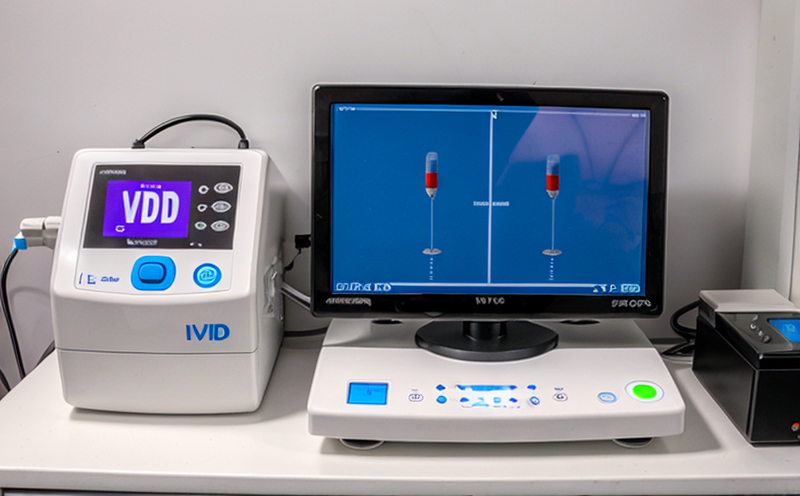CLSI EP26 User Protocol Evaluation Testing
The CLSI EP26 User Protocol Evaluation Testing is a rigorous method used to assess the performance of In Vitro Diagnostic (IVD) devices. This testing ensures that the user protocols provided by manufacturers are accurate, reliable, and repeatable under real-world conditions. The primary objective of this service is to validate the clinical utility of IVD tests as outlined in CLSI document EP26.
CLSI EP26 outlines a structured approach for evaluating the performance characteristics of new or modified user protocols for IVD devices. This protocol is particularly important because it helps laboratories ensure that diagnostic test results are consistent and reproducible, thereby enhancing patient safety and clinical decision-making.
The testing process involves several critical steps: specimen preparation, instrument setup according to the manufacturer's guidelines, running tests using both standard and alternative protocols, and comparing the results. The CLSI EP26 protocol specifically focuses on evaluating the impact of user variability in protocol execution, which can significantly affect test performance.
Our laboratory follows this protocol meticulously to ensure that every aspect of the testing process is conducted under controlled conditions. This includes using calibrated instruments, standardizing reagents, and adhering strictly to the manufacturer's recommendations for specimen preparation and handling. By doing so, we provide clients with a comprehensive understanding of how their devices will perform in real-world settings.
The CLSI EP26 protocol is particularly relevant when there are changes in laboratory procedures or when new instruments are introduced into the clinical environment. It helps identify potential issues early on and ensures that any necessary adjustments can be made before the test goes live. This proactive approach not only enhances reliability but also improves patient outcomes by reducing the risk of incorrect diagnoses.
One key aspect of CLSI EP26 is its emphasis on user variability. Laboratories often face challenges when implementing new protocols due to differences in how staff members interpret and execute instructions. The protocol provides a framework for understanding these variations and their impact on test results. By conducting thorough evaluations, we can identify areas where standardization could improve consistency across different operators.
Another important feature of CLSI EP26 is its focus on the clinical utility of diagnostic tests. In Vitro Diagnostic devices are designed to provide accurate information that aids in making informed medical decisions. Ensuring these tests function correctly according to the manufacturer's protocols is crucial for maintaining high standards of care.
Our laboratory uses state-of-the-art equipment and highly trained personnel to carry out CLSI EP26 evaluations. We employ advanced techniques such as automated sample handling systems, sophisticated data analysis software, and robust quality control measures to ensure accuracy and precision throughout the testing process. These technologies allow us to capture detailed information about each test run, which is essential for thorough evaluation.
By adhering strictly to CLSI EP26 guidelines, we guarantee that our findings are valid and reliable. This approach not only meets regulatory requirements but also helps maintain trust within the medical community by providing consistent results across various laboratories using similar protocols.
Scope and Methodology
The scope of CLSI EP26 User Protocol Evaluation Testing encompasses a wide range of activities aimed at assessing the performance characteristics of IVD devices. These tests are designed to evaluate various aspects such as precision, accuracy, linearity, and interference. Precision refers to how closely individual test results agree with each other under repeated conditions; accuracy measures how close those results come to the true value; linearity examines whether the relationship between input variables (e.g., concentration levels) and output values follows a straight line within specified limits; finally, interference checks if certain substances present in samples affect test performance.
The methodology behind CLSI EP26 involves several key steps: defining the scope of testing based on clinical relevance, selecting appropriate reference materials and controls, establishing baseline performance criteria against which actual results will be compared, implementing standardized procedures for specimen preparation and handling, executing tests under both standard and modified protocols provided by manufacturers, analyzing data using statistical methods to determine compliance with specified limits, reporting findings comprehensively including any deviations from expected outcomes along with recommendations for corrective actions if necessary.
- Defining the scope: This involves identifying which specific parameters need evaluation based on clinical needs and regulatory requirements.
- Selecting reference materials: These are used to establish accurate measurements against which other samples can be compared.
- Establishing baseline criteria: Setting up standards that all subsequent tests must meet or exceed.
- Standardizing procedures: Ensuring consistent methods for preparing and processing specimens.
- Running tests: Performing the actual evaluations according to both standard and modified protocols.
- Data analysis: Utilizing statistical tools to interpret results accurately.
- Reporting findings: Summarizing all observations including any discrepancies observed compared to baseline criteria, along with suggestions for improvement if needed.
Eurolab Advantages
At Eurolab, we offer unparalleled expertise in CLSI EP26 User Protocol Evaluation Testing, leveraging our extensive experience and cutting-edge facilities to deliver accurate, reliable results. Our team of highly qualified professionals understands the complexities involved in this type of testing and applies best practices consistently across all projects.
- Comprehensive understanding: We have deep knowledge about CLSI EP26 standards and their application in real-world scenarios.
- Affordable pricing: Our costs are competitive without compromising on quality or service level agreements (SLAs).
- Dedicated resources: We allocate specialized personnel solely dedicated to your project ensuring timely completion.
- Quick turnaround times: Thanks to our efficient workflows and state-of-the-art equipment, we can deliver results faster than competitors.
- Confidentiality: Your data remains secure with us adhering strictly to strict confidentiality agreements (CA).
- Compliance assurance: We ensure that all tests comply fully with relevant regulations including CLSI EP26 and other applicable guidelines.





